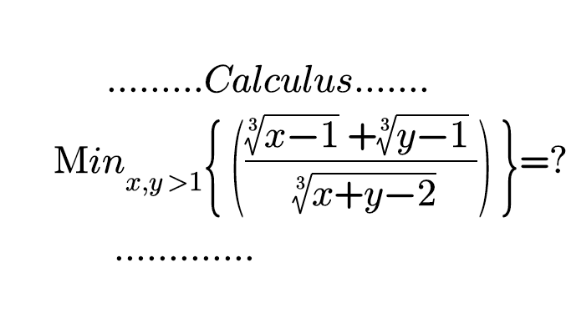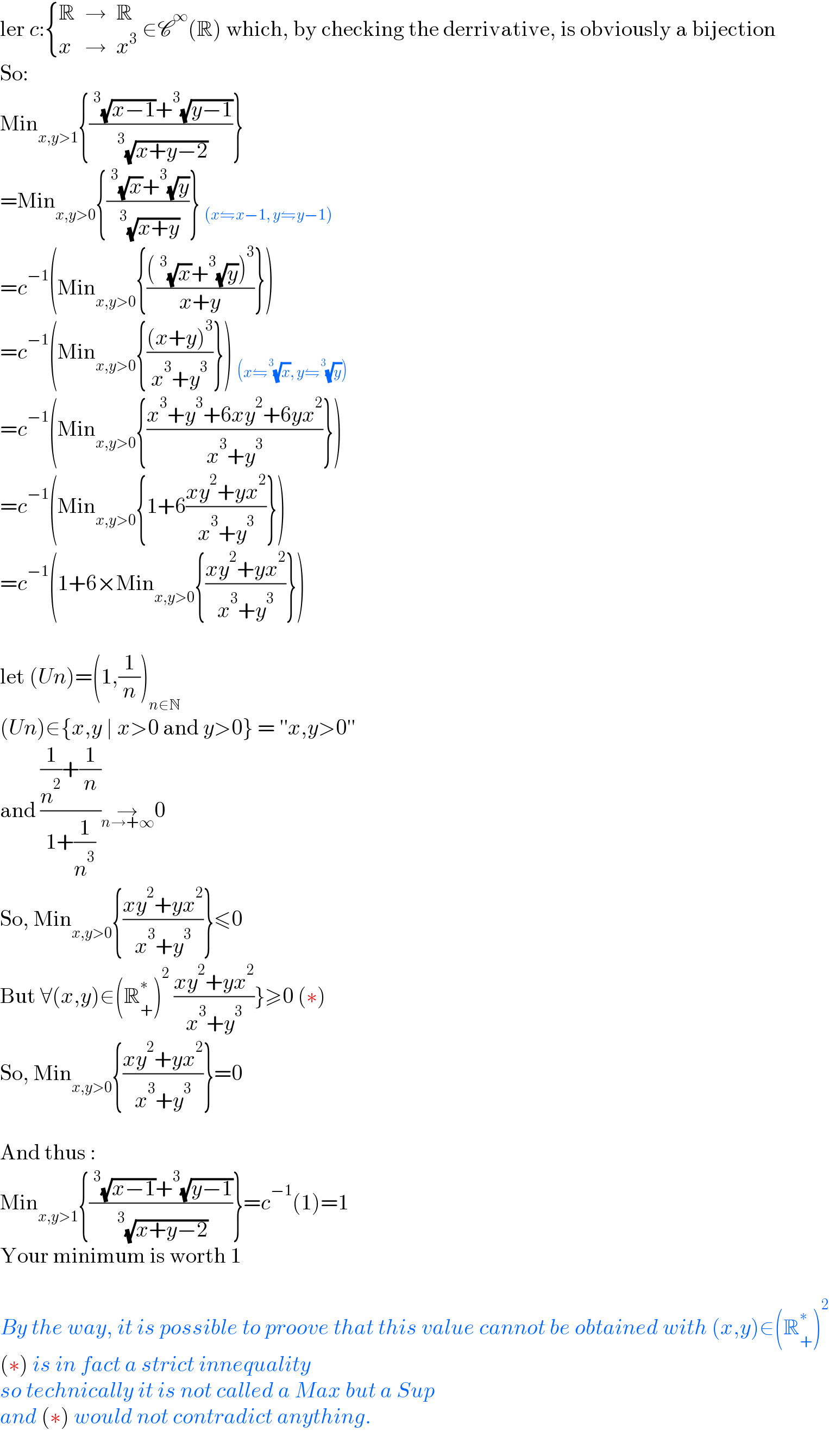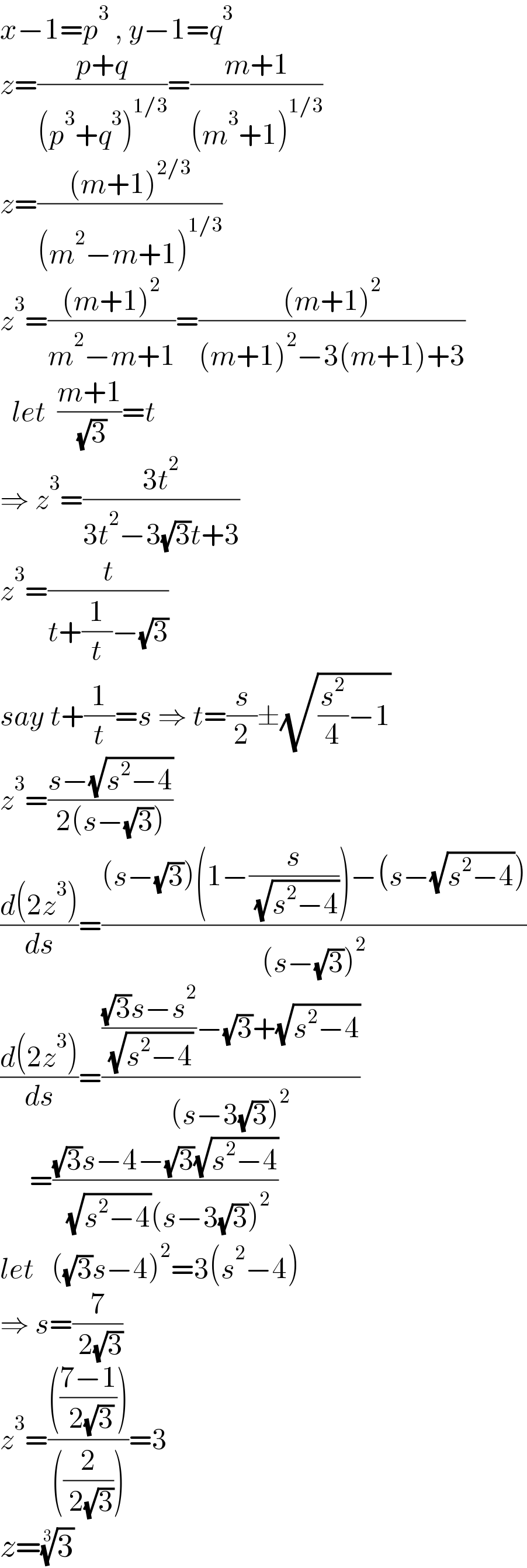
Question and Answers Forum
Question Number 142986 by mnjuly1970 last updated on 08/Jun/21

Commented by MJS_new last updated on 08/Jun/21

Commented by mnjuly1970 last updated on 08/Jun/21

Answered by TheHoneyCat last updated on 17/Jun/21

Answered by ajfour last updated on 17/Jun/21

